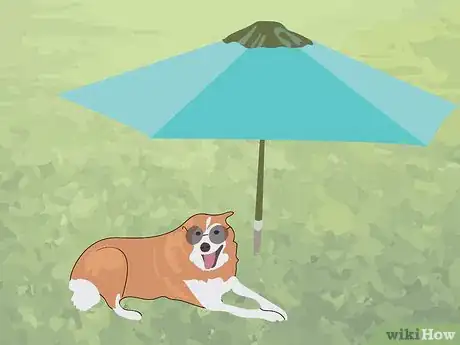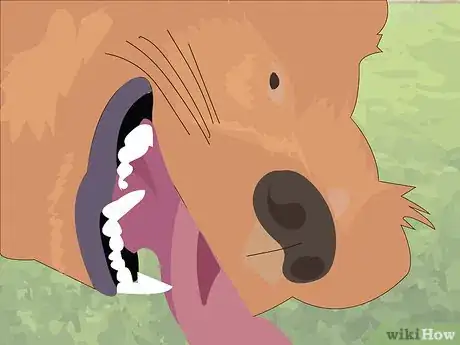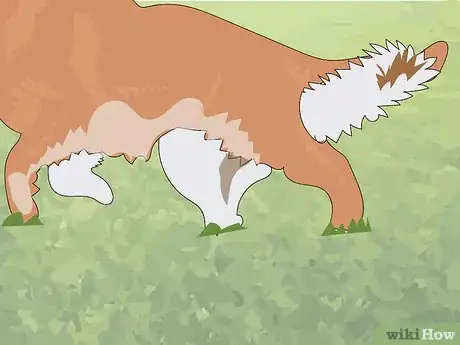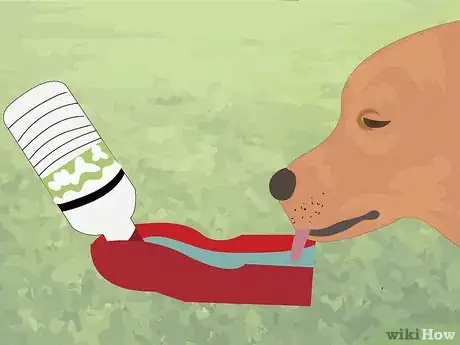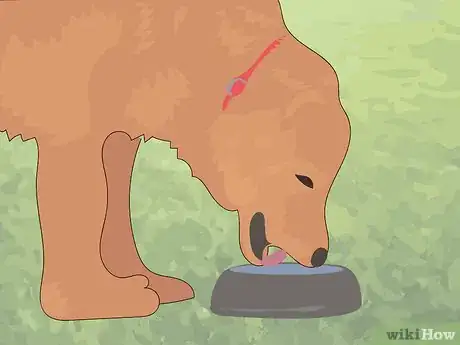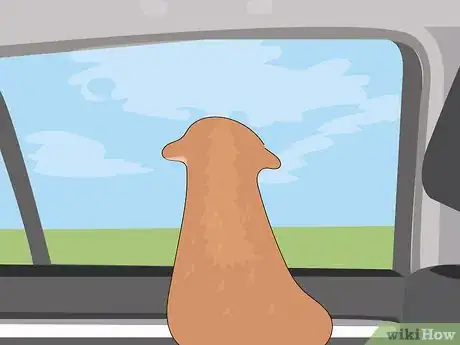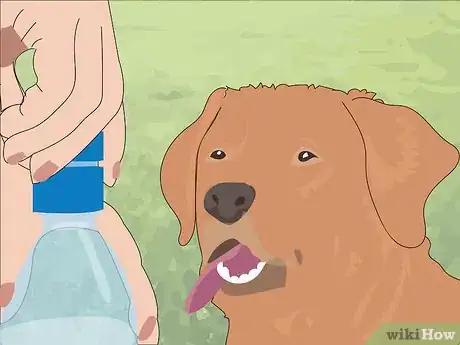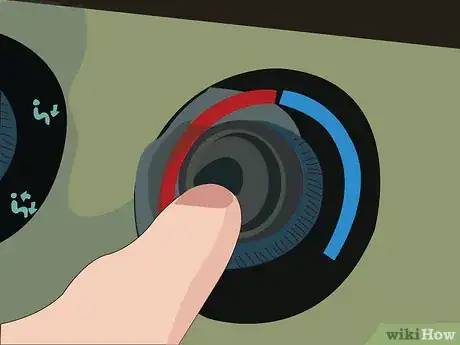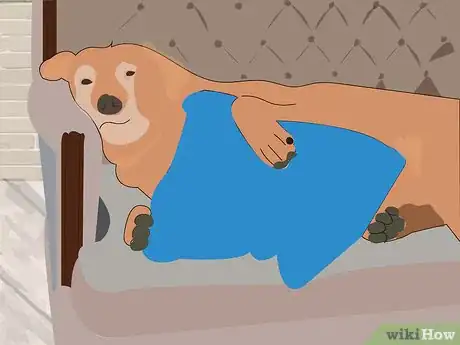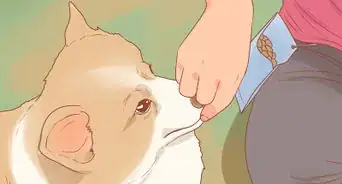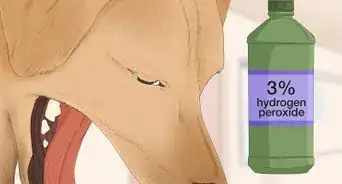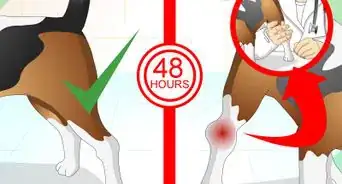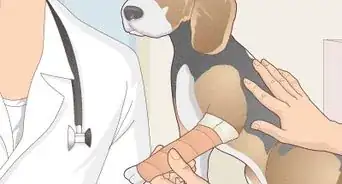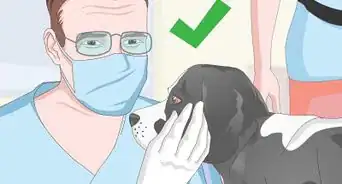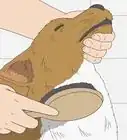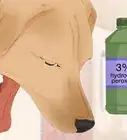This article was co-authored by Ovidiu Stoica. Ovidiu Stoica is a Professional Dog Trainer and the Founder/Owner of NYC Doggies. With over 20 years of professional experience working with dogs, Ovidiu is well versed in providing various dog care services and specializes in dog obedience and behavioral training. Ovidiu and his staff, who have more than 45 years of cumulative experience in the NYC dog walking business, provide personalized dog services including dog training, walking, hiking, boarding, sitting, and puppy care.
There are 10 references cited in this article, which can be found at the bottom of the page.
wikiHow marks an article as reader-approved once it receives enough positive feedback. In this case, 100% of readers who voted found the article helpful, earning it our reader-approved status.
This article has been viewed 83,249 times.
Hot summer weather can be more dangerous to dogs than many pet owners realize. When a dog's internal temperature is raised too high (generally about 106°F or 41°C), they can suffer a potentially fatal heat stroke. To keep your dog cool, make sure that they are prepared for hot weather with plenty of water and shade. If you are walking your dog, you may want to switch your usual path for a cooler, shadier trail. Driving with dogs presents its own risks, and whether you are going to the store or on a long-distance road trip, you should make sure your dog has what they need for the journey. Never leave a dog in a car alone.
Steps
Cooling Down Your Dog
-
1Trim but do not shave their coat. Dogs' fur is designed not only to keep them warm but to protect their skin from the sun. Some breeds have heavier coats than others, and you may want to take them to a dog groomer to have their coat trimmed for the summer months. That said, do not shave your dog, or you may leave them at risk for sunburn and overheating.[1]
-
2Leave a water bowl outside. If you have a backyard where your dog runs free, you should leave out a full bowl of water when they are running around in the heat. Refill this bowl every time your dog goes outside to make sure that it is cool and fresh.[2]Advertisement
-
3Give dogs plenty of shade. Dogs will need shady areas to rest while they are outside so that they do not overheat. If you have a backyard, you might want to provide your dog with an area of shade, either by giving them a dog house, an umbrella, or by planting trees.
- If you are planning on taking your dog to the beach, be aware that there might not be much shade available. Sand can also become hot, burning your dog's paws.[3]
-
4Avoid tethering your dog outside for long periods of time. Some dogs are kept outside tied to a tree or post. Others might wait outside while their owner goes into a shop. Either way, in the summertime, it is inadvisable to leave your dog tethered for more than fifteen minutes. If you need to go shopping, leave the dog at home.[4]
-
5Cool down the dog if they exhibit signs of heatstroke. Symptoms of heat stroke include heavy panting, difficulty breathing, loss of energy, drooling, and any obvious weakness or stumbling.[5] [6] If your dog is starting to show these signs, you can hose them down with cool (but not cold) water. If you do not have a hose, you can put your dog in the shower. As you do this, check the dog's rectal temperature every 30-60 seconds until the temperature is down to 103.5°F / 39.8°C. The goal is to slowly bring the dog's temperature down. You should have the dog checked out by a veterinarian.[7]
Walking and Exercising With Your Dog
-
1Go out during the cooler hours. The early morning and late evening hours will be much cooler than the middle of the day. It is recommend to walk your dog during these hours to avoid the worst of the heat.[10]
-
2Walk your dog on soft ground. Asphalt can become dangerously hot during the summer, burning your dog's paws and increasing their temperature. Instead of walking on sidewalks or blacktop, try to find dirt trails or grassy areas where you can walk your dog.[11]
-
3Carry a collapsible water dish. You will need to give your dog plenty of water while you walk. Plan on taking frequent breaks so that your dog can rehydrate.[12] Inflatable water bowls fold up easily in a backpack or pocket, and they allow your dog to drink water easily. Pour water from a bottle into the bowl so that your dog can drink at their leisure.
-
4Rest in shady areas. If your dog starts panting heavily or stumbling, they need to rest. These may be signs of oncoming heatstroke. Find a cool, shaded area to let your dog cool off for a few minutes. Do not stop out in middle of hot asphalt or in direct sunlight. These can cause your dog's temperature to spike.[13]
-
5Watch for signs of overheating. Keep an eye on your dog for signs of heatstroke. If your pet begins to tire or pant heavily, stop in a shady spot and give them some water. If symptoms don't subside, take them directly home and seek veterinary care.
Driving with Your Dog
-
1Equip your car with window shades. When your car is parked, you can put these shades in the windshield to prevent the car from heating up too much. The shades block out direct sunlight. Be aware that in the height of summer, the car will still be warm, but the inside of the car will not take as long to cool down for you and your dog.
-
2Give your dog water breaks. Your dog will need to be hydrated during the journey. If you are going on a long car trip, make sure to take regular breaks every hour or two to give your dog water. Bring along a travel dish or a collapsible water dish. Pour water in from a water bottle, and let your dog drink until they are satisfied.[14] [15]
-
3Put the air conditioner on. Even if you don't need the A/C, your dog might. Proper ventilation and air flow is important for your dog in the car. If your dog is traveling in a crate, make sure that the air can reach them. The crate should have holes, and the air flow should be unobstructed towards the crate.
- If your A/C does not work, you can also crack a window while the car is moving. Do not let your dog stick their head out of the windo.
-
4Never leave your dog unattended in a parked car. Even if you park in the shade and leave the windows open, the internal temperature of your car can spike very quickly to dangerous levels. Do not leave your dog in the car, even for just a few minutes. Leave them at home when you need to go to the store. If you are traveling with them, keep them close at all times.[16]
Expert Q&A
-
QuestionWhat are the signs of heat stroke in dogs?
 Ovidiu StoicaOvidiu Stoica is a Professional Dog Trainer and the Founder/Owner of NYC Doggies. With over 20 years of professional experience working with dogs, Ovidiu is well versed in providing various dog care services and specializes in dog obedience and behavioral training. Ovidiu and his staff, who have more than 45 years of cumulative experience in the NYC dog walking business, provide personalized dog services including dog training, walking, hiking, boarding, sitting, and puppy care.
Ovidiu StoicaOvidiu Stoica is a Professional Dog Trainer and the Founder/Owner of NYC Doggies. With over 20 years of professional experience working with dogs, Ovidiu is well versed in providing various dog care services and specializes in dog obedience and behavioral training. Ovidiu and his staff, who have more than 45 years of cumulative experience in the NYC dog walking business, provide personalized dog services including dog training, walking, hiking, boarding, sitting, and puppy care.
Professional Dog Trainer Signs of heat stroke include lethargy, uncoordinated movements, vomiting, diarrhea, and excessive panting.
Signs of heat stroke include lethargy, uncoordinated movements, vomiting, diarrhea, and excessive panting. -
QuestionHow can I help my dog cool itself off when it's hot out?
 Ovidiu StoicaOvidiu Stoica is a Professional Dog Trainer and the Founder/Owner of NYC Doggies. With over 20 years of professional experience working with dogs, Ovidiu is well versed in providing various dog care services and specializes in dog obedience and behavioral training. Ovidiu and his staff, who have more than 45 years of cumulative experience in the NYC dog walking business, provide personalized dog services including dog training, walking, hiking, boarding, sitting, and puppy care.
Ovidiu StoicaOvidiu Stoica is a Professional Dog Trainer and the Founder/Owner of NYC Doggies. With over 20 years of professional experience working with dogs, Ovidiu is well versed in providing various dog care services and specializes in dog obedience and behavioral training. Ovidiu and his staff, who have more than 45 years of cumulative experience in the NYC dog walking business, provide personalized dog services including dog training, walking, hiking, boarding, sitting, and puppy care.
Professional Dog Trainer Understand your dog’s natural protective measures against heat. Leave your dog’s coat intact—it protects the skin from UV rays and extreme temperatures (both hot and cold). Let your dog pant—this is how dogs sweat and cool their body temperatures.
Understand your dog’s natural protective measures against heat. Leave your dog’s coat intact—it protects the skin from UV rays and extreme temperatures (both hot and cold). Let your dog pant—this is how dogs sweat and cool their body temperatures.
Warnings
- Do not leave dogs chained up outside for long periods of time. Remember that shade moves with the sun. Even if it is shaded when you leave them, it might not be for long.⧼thumbs_response⧽
- In 85 degree weather, the temperature of a parked car can rise to 102 degrees in ten minutes and 120 degrees in under half an hour.[17]⧼thumbs_response⧽
References
- ↑ http://www.aspca.org/pet-care/general-pet-care/hot-weather-safety-tips
- ↑ Ovidiu Stoica. Professional Dog Trainer. Expert Interview. 1 March 2021.
- ↑ https://www.mspca.org/angell_services/heat-safety-tips/
- ↑ https://www.mspca.org/animal_protection/2016-hot-cars-and-dog-tethering/
- ↑ http://www.aspca.org/pet-care/general-pet-care/hot-weather-safety-tips
- ↑ Ovidiu Stoica. Professional Dog Trainer. Expert Interview. 1 March 2021.
- ↑ http://www.vcahospitals.com/main/pet-health-information/article/animal-health/heat-stroke-in-dogs/775
- ↑ http://www.preventivevet.com/dogs/heat-stroke-in-cats-and-dogs-how-to-treat-my-pets-heat-exhaustion-or-heat-stroke
- ↑ https://www.mspca.org/angell_services/heat-safety-tips/
- ↑ https://media.rspca.org.uk/media/pressreleases/details/-/articleName/PressHotWeatherAdviceForPetOwnersAsTemperaturesForecastToSoar
- ↑ https://www.mspca.org/angell_services/heat-safety-tips/
- ↑ Ovidiu Stoica. Professional Dog Trainer. Expert Interview. 1 March 2021.
- ↑ http://www.aspca.org/pet-care/general-pet-care/hot-weather-safety-tips
- ↑ http://www.aspca.org/pet-care/general-pet-care/travel-safety-tips
- ↑ Ovidiu Stoica. Professional Dog Trainer. Expert Interview. 1 March 2021.
- ↑ http://www.aspca.org/news/apcc-alert-car-tips-pet-passengers
- ↑ http://www.aspca.org/pet-care/general-pet-care/hot-weather-safety-tips
About This Article
To prevent your dog from getting a heat stroke, make sure you give it plenty of water to drink so it doesn’t get dehydrated. You should also provide a shady area where it can rest and cool down, either with an umbrella, a dog house, or some trees. When you go out walking in hot weather with your dog, carry a collapsible water dish and give your dog frequent breaks along the way. Try to avoid leading your dog over asphalt, which can get hot enough to burn its paws. Watch out for common signs of oncoming heatstroke, like heavy panting or stumbling. Take your dog to a cool, shady spot where it can rest and rehydrate, and if the symptoms don’t go away, take it to the vet. For more tips from our Veterinary co-author, like how to keep your dog cool in the car, keep reading!



